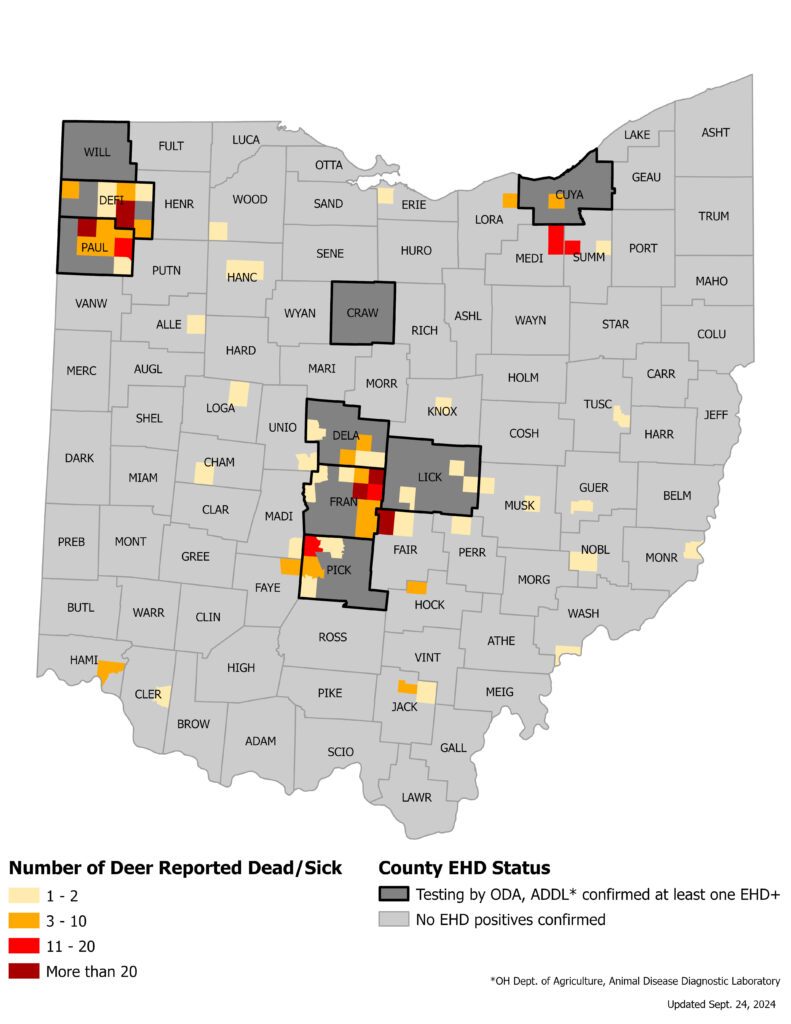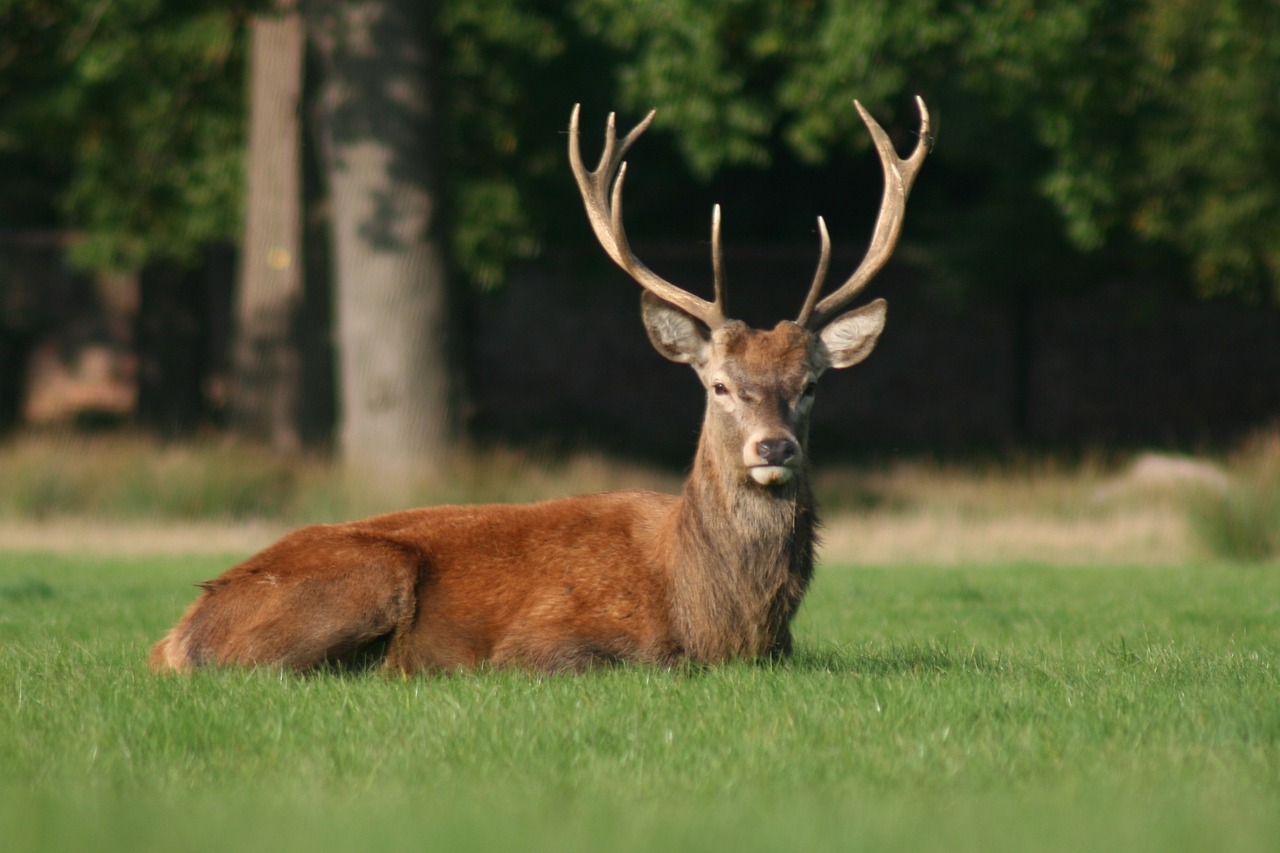By 1808Delaware
The Ohio Department of Natural Resources (ODNR) is actively monitoring reports of sick or dead deer across the state, particularly those affected by Epizootic Hemorrhagic Disease (EHD). With at least one cases already identified in Delaware County and several reports of dead or sick animals, officials are urging the public to report abnormal deer behavior to help track potential disease outbreaks.
Understanding Epizootic Hemorrhagic Disease
EHD is one of the most common diseases affecting white-tailed deer in the United States. It is caused by the bite of an infected midge, a type of tiny fly. EHD outbreaks often occur during drought conditions and can lead to high mortality rates in deer populations, although these populations usually recover within a few years.
Key Facts About EHD:
- Not a Threat to Humans: EHD does not affect humans, and venison from infected deer remains safe for consumption.
- Transmission: The disease is spread by infected midges. Once a hard freeze occurs, these insects die off, eliminating new cases of EHD for the season.
- Susceptibility in the Midwest: Deer in the Midwest have little natural resistance to EHD and can succumb within three days of showing symptoms.
- Symptoms: Symptoms usually appear about seven days after exposure, including disorientation, swelling of the head, neck, tongue, and eyelids, respiratory distress, and feverish behavior. Deer often appear disoriented and unafraid of humans.
- No Treatment Available: There is currently no treatment for EHD in wild populations.
Symptoms to Watch For
ODNR encourages Ohio residents, hunters, and outdoor enthusiasts to be vigilant in spotting potential cases of EHD. Typical signs to look out for include:
- Disoriented behavior and lack of fear of humans
- Swollen head, neck, tongue, or eyelids
- Respiratory distress
- Feverish appearance
- Carcasses often found near water sources
What to Do If You Encounter a Sick or Dead Deer
If you observe a deer exhibiting abnormal behavior or find a carcass, it’s important to report these observations to ODNR. Immediate contact by phone is preferred for timely action, but reports can also be submitted online.
To report a sick or dead deer:
🔗 Report Deer Observations Online
Important Precautions for Hunters
While EHD poses no direct threat to humans or livestock, ODNR advises caution when handling deer:
- Do Not Kill or Eat Sick Deer: There is no risk associated with consuming venison from EHD-infected deer, but deer with other illnesses may be unfit for consumption. Without proper testing, it’s impossible to determine the cause of illness.
- Use Gloves When Handling Deer: Always use rubber gloves when field dressing deer to minimize any potential health risks.
Tracking EHD in Ohio
ODNR continues to monitor and study EHD to better understand its impact on deer populations in Ohio. The public’s help in reporting cases plays a crucial role in managing the disease and mitigating its effects on local wildlife.
For more detailed information on EHD, including the latest updates on deer health in Ohio, refer to the Ohio Deer Season Summary. For questions or to report observations directly, contact ODNR.











